News
As Lawmakers Prioritize Broadband, Rural Communities Wonder When It Will Reach Them
By: Liam Niemeyer | Ohio Valley ReSource
Posted on:
TOLU, Ky. (OVR) — As Barkley Hughes and I rumbled around in his red utility vehicle last month, memories slowly unwound about his western Kentucky hometown.
Tolu, a historic Ohio River-bound community of less than a hundred, only makes up a few blocks before opening up into rolling farmland. Hughes openly admits it’s not near anywhere, but that’s part of the reason he came back.
He points to the Methodist church across the street he attended growing up. There’s the community center that would put together a “haunted house” around Halloween. There’s what used to be the general store in town, which he figures closed more than a decade ago because it’s hard to get deliveries out in a place so remote.
“It’s one of those communities that your mom can step out on the back stoop and scream your name and you know to come home,” said Hughes, who’s raising his 10-year-old son, Miles. “I just wanted him to experience that.”
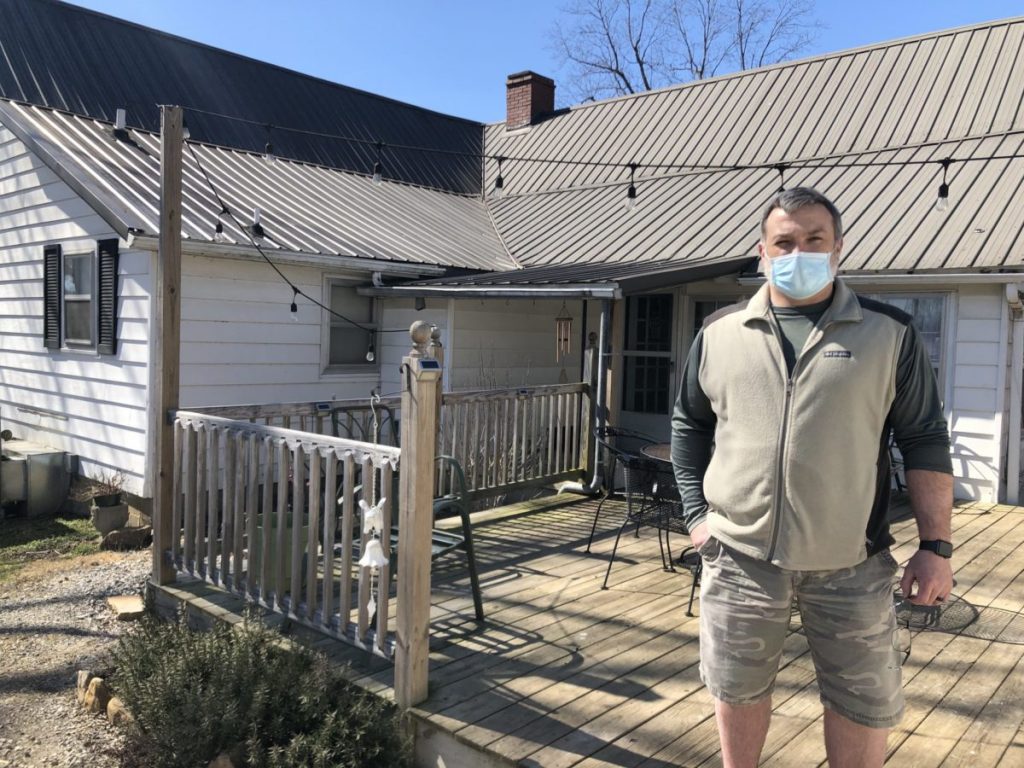
He’s tried countless ways to improve connection for himself and his community. At one point, Hughes even bought a 190-foot communications tower of the kind traditionally used by towboat companies. He tried to have someone across the river beam an internet signal to him; the small telephone company in southern Illinois declined the “out-of-the-box” idea.
Eventually, we arrived at what he ended up settling for: a few AT&T distribution boxes near the baseball field. Hughes said the company installed fiber optic cable — often seen as the premier form of internet connection — here in 2006.
“It’s aggravating because you know what’s in here, and you know internet to every home in this community could come right through this box, but nothing happens. It’s frustrating,” Hughes said.
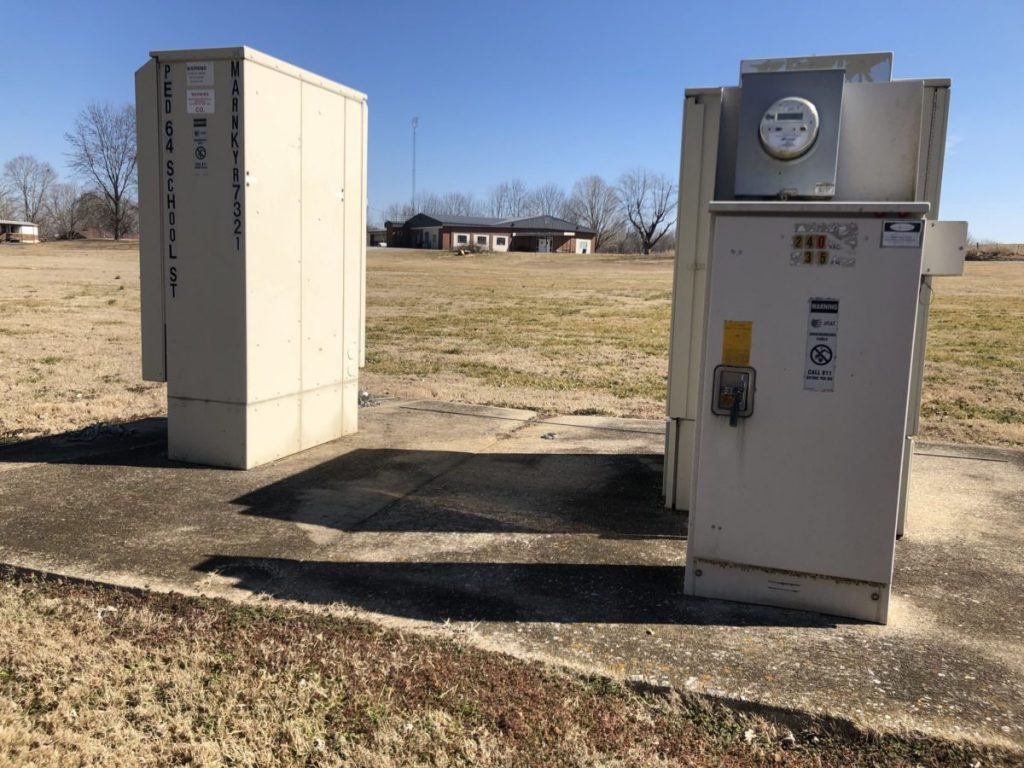
Faster options, including cable, exist just a 20-minute drive away at the Crittenden County seat. But Hughes isn’t sure when AT&T or another internet service provider will build the last mile of internet connection to a place like Tolu. It’s emblematic of countless rural Ohio Valley communities that find themselves on the wrong side of the digital divide and found it harder to adapt to remote work and schooling when the pandemic forced people to isolate last year.
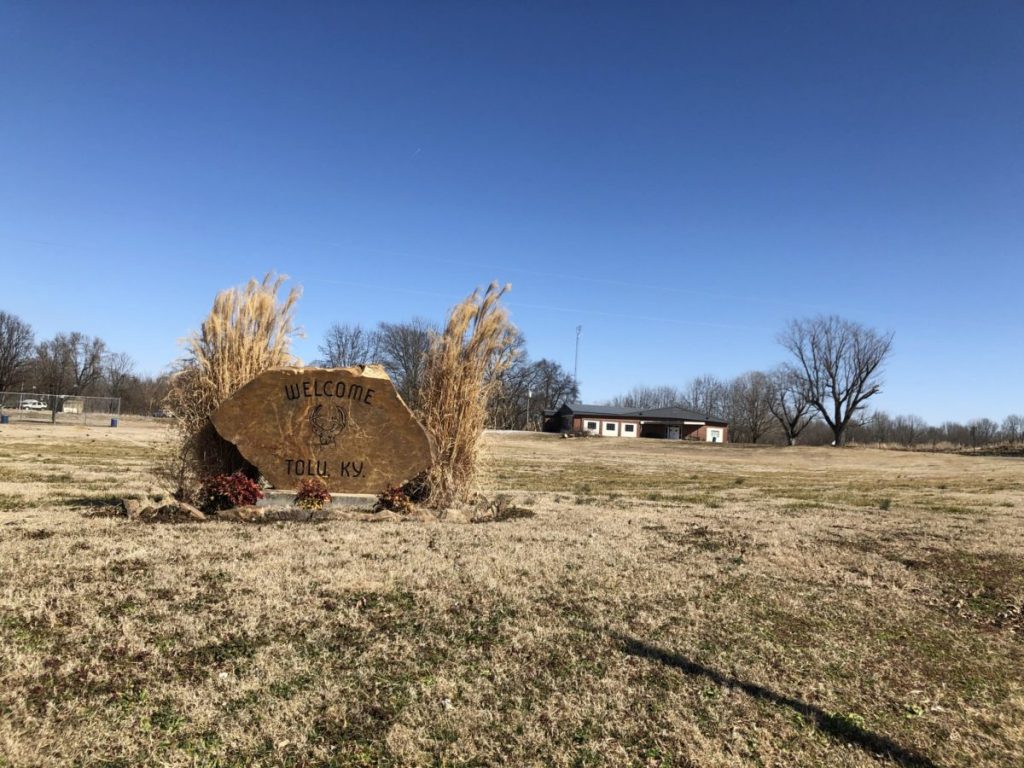
Broadband advocates are enthused but wary. They’re calling for firm accountability with this funding, concerned that the influx of spending could be wasted as they say has happened before. But there is no doubting the need in rural communities.
A data analysis last year from the internet research site BroadbandNow found that for many states with large rural areas, broadband access is far lower than federal data indicates. For example, the group estimated that only 69% of West Virginians have broadband access, far lower than the 85% government data show. And a Pew Research Center survey found 1 in 5 parents across the country with children in schools closed down to the pandemic believed they wouldn’t be able to complete schoolwork because of poor internet connection.
Hughes and many others in isolated communities are tired of waiting.
“It should be treated as no different than electricity. We were able to wire the entire country in a short order,” Hughes said, referencing the rural electrification projects of the early 20th century. Now he wants his home town to join 21st century technology. “We’ve already went through the information age. We’re well into it. It’s about time that we catch up.”
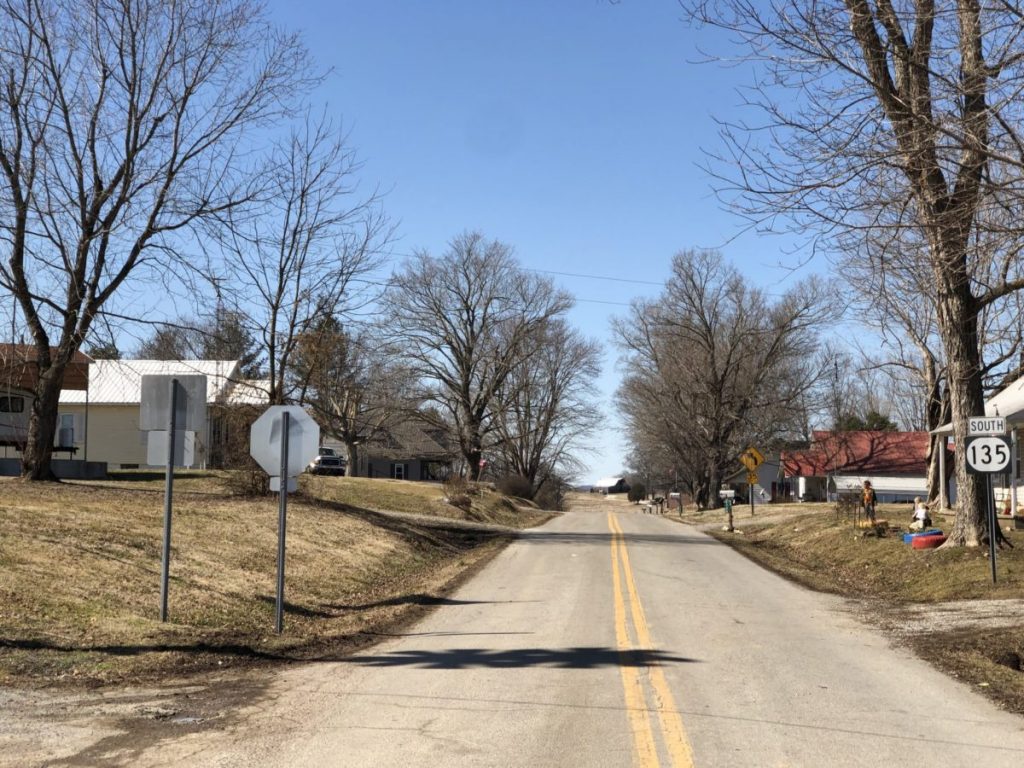
Lost In The Last Mile
Crittenden County Judge-Executive Perry Newcom has been preaching his message of the last mile since he got in office about a decade ago, but to no avail.
“Basically no change whatsoever,” Newcom said, his colleague chuckling next to him in the county courthouse. “Everyone that you speak with will tell you they understand the problem. They understand the frustration. They understand the need. But no one has a solution at this point.”
The “last mile” of broadband — the final, physical or wireless connection directly to homes and businesses — is a two-fold problem for towns like Tolu: there isn’t the money for it, and there isn’t an internet provider with the capability, expertise or willingness to do it. It’s not like Newcom’s county of about 9,000 people has the funding to build their own internet service, he said.
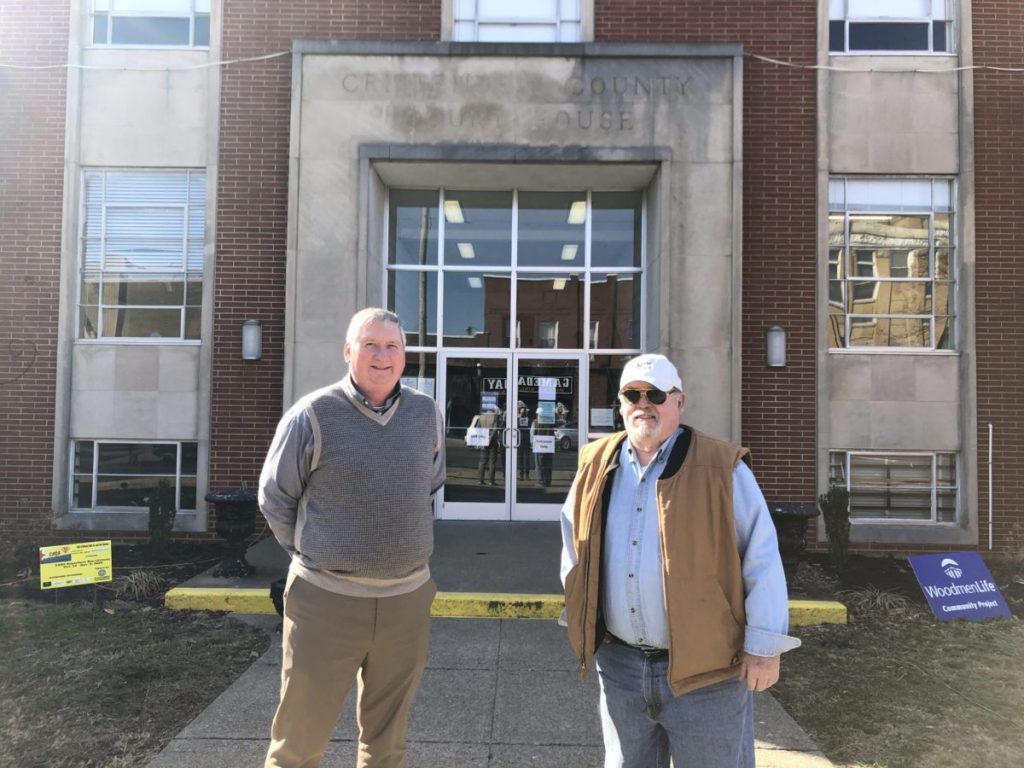
Amanda Davenport, executive director of the economic development organization Lake Barkley Partnership, said the ongoing situation is a crippling detriment to western Kentucky.
“Our businesses are trying to grow. We need a service. We have a customer base that wants to pay for the service,” she said. “We don’t have someone that’s willing to come in and provide that service, and then they’re not willing to provide the service and they’re holding competition from someone else coming in to provide the service.”
Davenport’s comments echo a frustration that Barkley Hughes voiced in Tolu. Hughes alleges AT&T “killed” a federal grant opportunity in the 2010s that would have provided internet service to the local community center, volunteer fire station, and surrounding rural areas.
Tolu won more than $500,000 from USDA Rural Development to install a fixed wireless signal from a tower, using a radio transmission to bring internet to homes in the line of sight of the tower with no data caps. Emails received by the Ohio Valley ReSource show an AT&T representative denying fiber access to Q-Wireless, the Indiana-based company in charge of the project at the time. The fiber would have acted as an internet “backbone” for the tower signal.
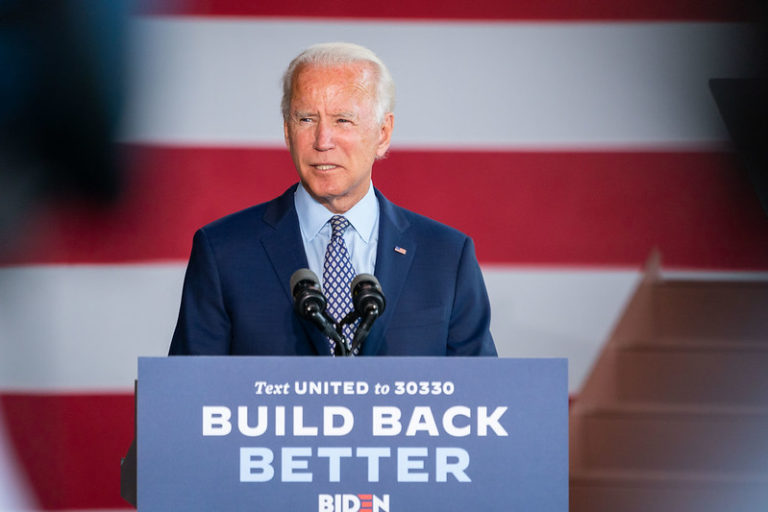
“It just leaves the community stuck. What are you supposed to do? How does someone move forward if this telecom says, ‘I’m not providing service, you’re not worth investing in,’ at the same time saying it’s unfair competitively if you allow someone else to come in and provide service to this area.”
AT&T declined an interview for this story. In an email, an AT&T spokesperson said the company provides quality and reliable internet to customers in Crittenden County, and that suggestions that the company is anti-competitive are wrong. The spokesperson said AT&T decided to not provide services to Q-Wireless that would be then repackaged by Q-Wireless. AT&T said it had invested $2.5 billion in Kentucky, Ohio, and West Virginia to expand and enhance wired and wireless services from 2017 to 2019.
“We understand how important it is that every American has affordable access to the internet. We’re aggressively expanding and upgrading our networks to provide fast and reliable internet access to more people,” the spokesperson said.
A 2020 report from the Institute for Local Self-Reliance, an advocacy group promoting community broadband projects, found that more than 83 million Americans have only one option for an internet provider. According to the FCC, Tolu has three satellite internet providers to choose from, with only some able to receive a data-capped fixed wireless signal from AT&T, that Hughes said was only recently made available. Other Tolu residents interviewed by the ReSource said the fixed wireless signal was middling at best, with families unable to use multiple devices without a slowdown. Fixed wireless internet traditionally suffers from access issues, as landscape and geography can block a signal from reaching some locations.
And the potential cost for western Kentucky counties to build the last mile internet connection themselves is daunting. Davenport spearheaded a recent feasibility study that found building out fiber and fixed wireless to the four western Kentucky counties of Caldwell, Crittenden, Lyon, and Livingston — making up a little less than 40,000 people — would cost about $135 million. Davenport said by banding the counties together, the project could become more economically attractive for grant opportunities.
An influx of state and federal funding is potentially on the way, but one Ohio Valley county isn’t waiting around for that windfall to come.
“Don’t Get Discouraged”
Peggy Bailey is used to frustrating internet service in her part of southeastern Ohio. Her home in rural Washington County doesn’t have service, and she’s had to use an excruciatingly slow connection from her work-provided iPad hotspot. When the pandemic hit, Bailey and her neighbor realized something needed to be done.
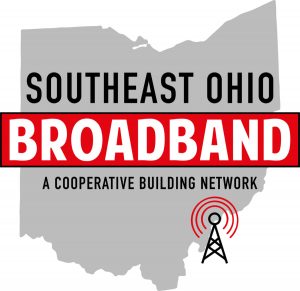
“We wanted to do something that was member owned. So everybody was involved. Everybody has a say,” Bailey said. “It breaks your heart knowing that kids are forced to do virtual at home, and then they have no access, that they’ve got to go to a local McDonald’s to do their homework.”
Bailey and two other volunteers, along with one paid engineer, had put tens of thousands of dollars of their own money into putting a fixed wireless transmitter on a local tower, eventually receiving $50,000 in startup funds from the county. In recent weeks, the small group has been working at a frantic pace to sign up those excited about the new service, with more than 300 people so far expressing an interest.
The FCC defines a place as “underserved” with broadband if it’s receiving a download speed of less than a 25mbps, and 3mbps upload speed.
The speeds coming from the fixed wireless tower?
“We’ve got clients that are five miles out. They’re getting 100 megs of download, and 20 megs of upload,” said David Brown, a co-founder of the cooperative. “I’ll just say they’re very happy about it.”
Both Bailey and Brown told the ReSource they wanted the group to be a nonprofit cooperative in part after seeing other companies come into the region promising service, only to underdeliver or not follow through at all. Like their local electric cooperative, a community-owned group can be responsive to the community.
Some small independent companies and local telephone and electric cooperatives in the Ohio Valley have built out broadband with much success in their service areas, in some cases building fiber to the home. A bill moving through the Kentucky legislature would allow some electric cooperatives in the state, including the Kenergy Corporation in western Kentucky, to bypass state law prohibiting them from expanding into broadband service.
Community-led broadband initiatives have also popped up elsewhere in Appalachia. The Biden administration has put an emphasis on encouraging municipalities in creating their own internet networks. (Republicans in Congress have different ideas, and at least one Ohio Congressman wants to ban municipal networks.)
While their plan is to serve Washington County first, the cooperative purposefully has “Southeastern Ohio” in its name with an eye toward potential expansion.
“People who are in a similar situation, don’t get discouraged. There’s a way to get it done,” Brown said. “And don’t wait forever for somebody to solve your problems. Take it on yourself.”
Funding Influx
State lawmakers in the Ohio Valley are all pushing legislation calling for more funding for broadband, and accountability over that funding. Kentucky could see $250 million in broadband grants. Ohio Gov. Mike DeWine is calling for $290 million in the state’s next budget for broadband expansion. In West Virginia, a bill being advanced aims to bolster accountability, with some legislative committees given the authority to request information and attendance from companies that take public broadband funds.
At the federal level, much of the available funding has flowed through the FCC’s past Connect America Fund and the current Rural Digital Opportunity Fund (RDOF). Entities both public and private bid on projects for underserved regions.
In phase one of the recent RDOF auction, $9.2 billion went to build out broadband in 49 states over the next decade. The FCC reported Ohio, Kentucky, and West Virginia cumulatively received more than $681 million of that total. The Southeastern Ohio Broadband Cooperative did not get a share, Brown said. However, funding to expand in parts of Washington County went instead to Charter Communications, one of the largest cable and telephone providers in the country.
“I hope [Charter Communications] live up to expectations and the agreement that they made with the RDOF. However, we are skeptical based on the history of the Connect America Fund and those obligations not being met,” David Brown said.
Brown is not alone in his skepticism. Critics say the FCC invested hundreds of millions of dollars across the Ohio Valley in large telecom companies, such as the bankrupt Frontier company in West Virginia and AT&T in Kentucky, while large swaths of the region are still underserved.
“We need total transparency from the funding recipients. If you take this public money, you need to explain to us how it’s being spent. You need to show us the schedules of your deployments,” Tom Reid said, an industry consultant working with local governments in southeastern Ohio on broadband. “We need true information. You can’t get any of that from these FCC programs. They consider it all proprietary.”
Reid said companies involved in RDOF need “good, strong specifications” to follow and a shorter timeline for deploying that broadband. One of the biggest winners in the RDOF auction was a new space-based initiative called Starlink, from the private spacecraft company SpaceX owned by Elon Musk. Reid thinks such an initiative is an interesting concept, but believes what the Ohio Valley truly needs is a replacement of the aging copper telephone lines throughout the region with something like fiber to homes.
“We’ve spent enough money to do it. Let’s not keep throwing new money down the same process. It has been such a complete failure,” Reid said.
In a statement, an FCC spokesperson said the FCC is carefully reviewing winner bidders in the RDOF to make sure they have the capabilities to deliver on their commitments, along with improving mapping technology to understand where broadband is lacking.
“The FCC is working on multiple fronts to close the homework gap, make broadband more affordable for low-income families, and increase access to broadband service,” the FCC said.
Inaccurate FCC maps of broadband coverage have been a common complaint by broadband advocates in the past, something that Reid and another consultant in the Ohio Valley are actively working to combat. For example, if an internet service provider offers service to just one household in a census block, then the FCC marks the entire block as covered by a provider.
In Kentucky, the state Education and Workforce Development has put out a call to action across the state to submit existing internet speeds, from no service and high speed, to get a better idea of true broadband access. Minnesota-based consultant Glenn Fishbine, is helping the state run the speed test, and said it’s the most remarkable speed test data collection he’s seen, with upwards of 80,000 tests.
Fishbine said the goal of these speed tests is to be able to contest inaccurate FCC maps with records of actual speeds, in particular when applying for various grant opportunities to provide service.
He added that grant funding and other ways of cost-sharing is key for building out the last mile of broadband, as the financial risk can be significant for an internet service provider if not enough people in a given area sign up for expanded fixed wireless or fiber service.
He said it comes down to economics. The buildout of fiber to homes can vary wildly depending on the geography that’s being navigated. He said he knows of a company in New England building fiber for $3,000 a mile; in Kentucky, he estimates costs could reach $60,000 a mile.
As for the explanation of why fiber access was denied in Tolu, Fishbine said it’s common for telecoms to avoid extending existing fiber to homes because, again, the expense: about $1,500 to $3,000 to connect a house, with a longer time-frame on investment return. It’s about the money.
“The telcos are horribly spoiled. They’re spoiled, rotten kids. They don’t need to do a lot of good public service,” he said.
Finding A Connection
One of the last stops Barkley Hughes makes in Tolu is at the volunteer fire station, where a tiny black antenna is barely visible sticking off the side of the roof.
Crittenden County Schools set up hotspots at fire stations across the county, including a mobile one attached to a school bus, as a way to provide students with poor or no internet connection a way to download their class assignments during remote learning. The school bus with the hotspot would go to different parts of the county each day to deliver meals and provide students an opportunity to connect.
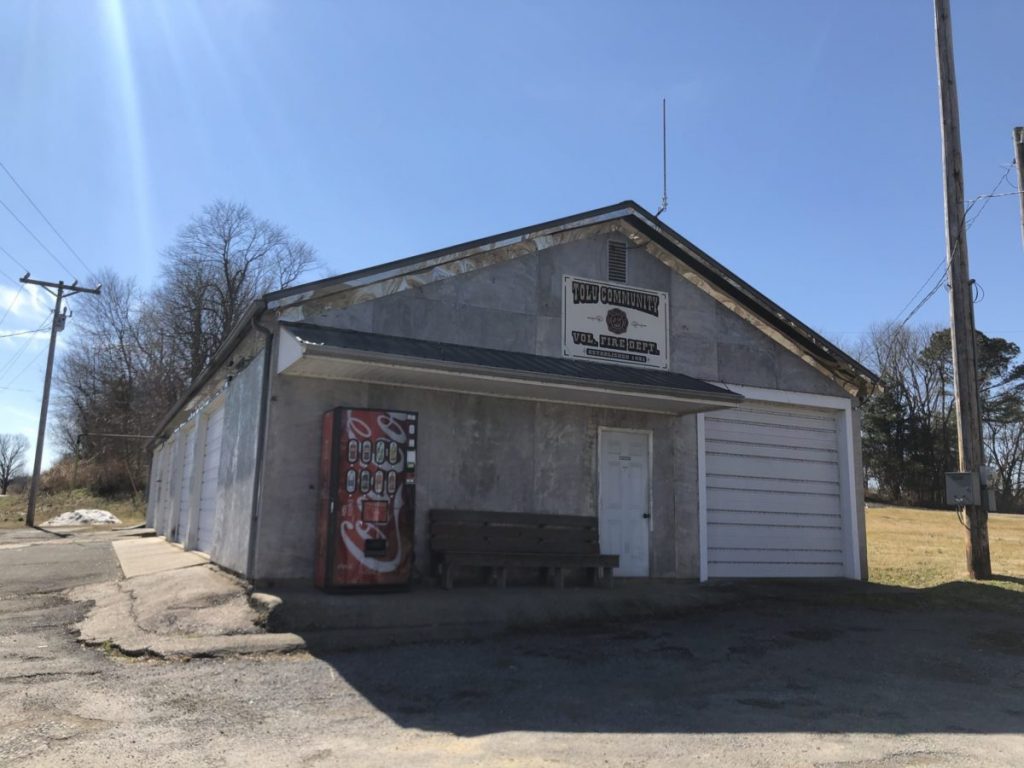
“I want to emphasize the fact that this school system’s not mega wealthy. But they’re trying because, well, no one else is,” Hughes said.
Crittenden County Schools Superintendent Vince Clark admits that the service offered isn’t perfect, but said the small district met a crisis with some solutions, using CARES Act funding. Clark also said he recently learned the county was selected to receive a grant from AT&T to provide hundreds of hotspots for families to use while learning virtually, as a part of a $10 million effort by AT&T to help vulnerable and at risk students amid the pandemic.
With state and federal funding on the horizon, the Ohio Valley could be realizing a watershed moment for rural internet following the brutal reality exposed by the pandemic. Kentucky’s “middle mile” broadband network, KentuckyWired, is about 98% complete according to network executive director Jamie Link, with construction of parts in western Kentucky wrapping up by this summer. Once completed, the open access fiber network could serve as a backbone for those who want to build out the last mile of fiber and fixed wireless, including in Crittenden County.
Clark is proud of the grant and what it could mean for his district. But is it ultimately an adequate replacement for building the last mile of broadband? He’s not sure.
“There’s dozens of other counties like Crittenden County,” Clark said. “My question is, what are those folks doing? You know, to make sure that their kids and their families that have chosen to do virtual and remote learning … to be connected?”
The Ohio Valley ReSource gets support from the Corporation for Public Broadcasting and our partner stations.

